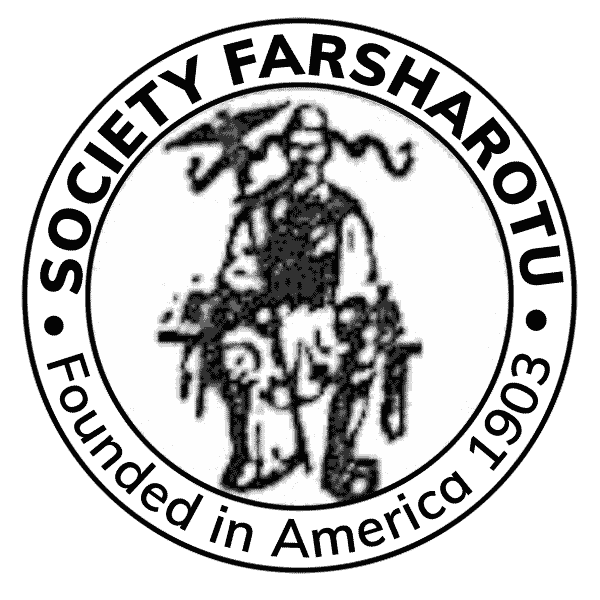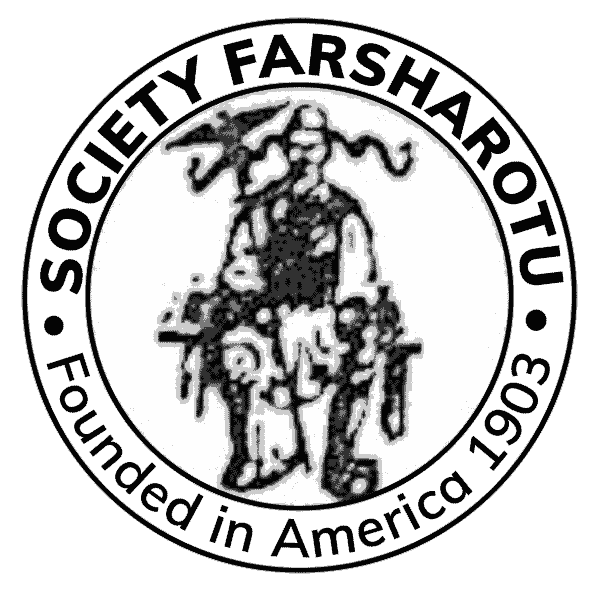Did You Know What Others Have to Say about Us?
In the six months since my first visit to Tirana the city has acquired a bit of spit and polish…. But in some ways times are harder. Prices are rising constantly; telephone rates have skyrocketed since December…. TVSH is running the same advertisements as in winter, mostly for sweets, soft drinks and cat food… in a country where many people can hardly afford to eat…
The markets are overflowing now with summer produce: tomatoes, cucumbers, eggplant, okra, cherries… .
At the art gallery I see a watercolour by Spiro Vllahu of an Orthodox church in Tirana, and I want to find it. We walk to the lake, to Shën Prokopi. ‘You won’t find the church in your picture, though a church has existed here for a long time,’ says the caretaker, who belongs to the Shundi family, one of the oldest Vlach families in Tirana, ‘In 1967, all the church’s ornaments and mosaics were destroyed and it was turned into a restaurant. But the people never forgot the church. They came and prayed around the building, and when they went for a walk they never said “Let’s go to the lake,” but “Let’s go to Shën Prokopi.”
Back at the art gallery I meet Vllahu. A strong religious theme runs through all his work. He has painted many Albanian churches both Catholic and Orthodox, existing and destroyed. He spent seven years in prison under the old regime. He had studied art in Russia and when Albania broke off relations with the Soviet Union he was accused of being a spy.
I also meet five women artists at the gallery. Eleni Laperi Koci (who speaks good English) is director of the gallery … .
They deplore the difficulties of balancing life in Albania with a career in art. There are the demands of husband, children and home, there is not enough space to work, paints and paper are in short supply. That is why they decided to form an association of women artists to help each other by sharing books and working to get exhibitions in foreign countries and to meet foreign artists. The association has 18 members though about a hundred women in Albania have studied art, few of them are able to follow that career.
Albania: A guide and illustrated journal,
by Dawson, Dawson and White (1995 Bucks, England)
It is well worth coinciding with the sporadic bus service to Siráko (1050 metres), since it and its neighbour Kallarítes are much the most attractive settlements of the south Píndhos. The well-preserved mansions, archways and churches bear a strong resemblance to those of Zagória, but the barren, cliffside, almost fortress-like setting of Siráko is quite a contrast to the gentler slopes and greenery west of the Aóös. The village is also the birthplace of a few national political figures and poets, and has several statues of those who made good…
To begin, follow the single street-lit walkway east out of town. Just past the next-to-last inhabited house on the cliff-face overlooking the Hrússias stream, and just before a clump of three or four walnut trees, bear right onto a path passing just under the last small occupied house of Siráko. A 20-minute descent along a progressively clearer step-trail brings you level with the river (about 900 metres), right by an abandoned mill and a modern metal bridge. The scenery is riveting and the cool depths of the gorge are a balm on a hot day.
As you begin your climb up the opposite cliff face you’ll catch sight of another, much larger empty mill a few hundred metres upstream. Part of the 50-minute ascent to Kallarítes from the river is via a ladder inside a tunnel hewn into rock, a bit of engineering the villagers are justly proud of. Once through this stone gallery you’ll have a comprehensive view back over Siráko.
Kallarítes (1050 metres) is less enclosed and greener than Siráko, facing south over the gorge of the river which from here on is known, logically enough, as the Kallarítikos. Like Siráko it is a Kutsovlach village and, not to be outdone by its neighbour, it has long been renowned as a cradle for goldsmiths and silversmiths, specifically most of the ones still operating in Ioánnina. Also in Kallarítes, there are two good psistariás on the generously laid-out cobbled platía, and one rather basic ksenónas (inn) with half a dozen beds.
To move on towards Prámanda, descend south-east from the square via the land leading away from the Melissa grocery store. The cobbled way zig-zags down for half an hour to a spring and 20 minutes further to a fine old bridge over the river at just under 800 metres. Sadly, just the other side of the bridge, you’ll stumble upon the leading edge of the ugly new road, which by the time you read this will have found its way — hopefully not on top of the kalderími — into Kallarítes.
Trekking in Greece,
by Marc Dubin (Hawthorne, 1993)
Our next destination is Nympheon… The road starts to climb, and we are treated to a wonderful view of the plain with its lakes, villages and meadows like a carpet of popular art… We do not see Nympheon till we are nearly there, it is tucked into a lush valley, surrounded by hills with very high beech-trees and thick vegetation.
… Proceeding along the flagstone-paved, narrow streets of the village, we come to the small square with its monument to Nympheon’s war heroes. The Nikios School stands nearby, a beautiful stately stone edifice surmounted by a clock. At the end of the main street we meet our good old friends… We will spend the night in their new two-storey stone house, built in the traditional style of the area… A beautiful traditional wooden staircase, made mostly by our friends’ hands leads to the upper floor with the bedrooms. In this house wherever you look you see nice pieces of old furniture, wonderful pictures made on the loom or embroideries, hand-made woollen blankets and carpets, old lamps and brass utensils.
For lunch they offer us pie with herbs from the mountain, yogurt and home-baked bread.
Early in the morning we take a walk in the village. We are amazed by the traditional mansions, each one different from the other… We reach the upper part of the village dominated by the big church of Ayios Nikoloas, its stone masonry and size indicative of the wealth and luxury once possessed by this village…
At the small kafenion… the village veterans their faces creased from toil… tell us that the village was built in 1670 on top of Mt. Visi. It was originally named Neveska. In those days it had a population of 2,000 most of whom were engaged in commerce, especially foreign trade, which brought wealth to the town. They took part in many wars, first against the Turks in 1821, then for liberation of Macedonia and finally in the First and Second World Wars. They are Koutsovlachs, the Latin people of the Balkans, known for their intelligence; they were mainly tradesmen, craftsmen and goldsmiths.
A Travelogue in Greece and a Folklore Calendar,
by Sofia Constantinidou-Partheniadou (Athens 1992)
In the Rumanian view, the Koutzo-Vlachs, the ‘Macedo-Rumans’ of the Balkans, would be some of the scattered descendants of the inhabitants of two new ‘Dacias’–the colonies Aurelian founded for the population he had evacuated to Moesia, modern Serbia and Bulgaria, along the south bank of the Danube. One interesting figure glimmers for a moment among these transplanted Dacians a hundred years after Aurelian’s evacuation south of the Danube: the remarkable St. Nicetas of Remesiana (now Bela Pelanka, in Serbia) who is the author of not only of the Te Deum–which was wrongly attributed until early this century to SS. Ambrose and Augustine–but also of a clause in the Apostles’ Creed. He was a friend of Paulinus of Nola who wrote an ode to him in saphhics when he visited him in south Italy; this sets him at only one remove from Ausonius and Roman Bordeaux. Then the dark swallows up this twilight beacon.
Between the Woods and the Water,
Patrick Leigh Fermor, 1986, New York.
The days of wearing ethnic costume are more or less over, unfortunately, except for weddings or high holidays. But there is still an unmistakable cohesion and shared identity among the old men sitting on the bench by the bus stop: all in dark suits, with weatherbeaten faces and identical hand-carved walking-sticks. They are all Vlachs, as is the man by the side of the road who needs a lift. He sits silently in the back, staring out of the window into a landscape so like the Cotswolds: little beech coppices, rushing streams, a kingfisher in front of the car. We reach his destination, a small church on the outskirts of the next village. He points at the assembling wedding party, ‘Numta.’ He coughs and climbs out of the car.
To say ‘wedding’ in Vlach is to speak the language of the Roman legions abandoned to the north of Metsovo. Measa (table, from the Latin mensa), is perhaps an easier word to pick up.
…it goes without saying that there have been some very distinguished Vlachs in Greek life. The battleship moored in Piraeus harbour as a national monument, the great ancient grey warhorse of the Hellenic navy, so unfortunately moved from its old mooring point on Poros, the Evangelos Averof, was a gift to the nation in its hour of need from a Vlach, one of the richest men of his day, and named after him. It was for a long time used as a training ship by the Greek navy in the Saronic Gulf and then retired… The strange little men in the northern mountains, wearing long black capes, are the greatest pastoralists of all, expert at running herds of three or four thousand sheep, surrounded by dogs so large and fierce that they inspire more fear among unwary walkers than the occasional wolf they are designated to deter.
The Greeks: The Land and the People Since the Last War,
James Pettifer, 1993, London.


Responses